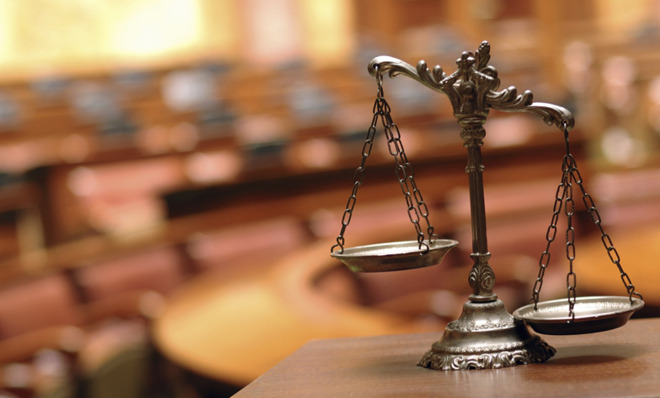Law schools don't help the poor get rich — they help the rich stay rich
Why? Because there are very few poor people in law school.

Recently, I argued that we should reduce legal education requirements in America by trimming the length of law school, making law an undergraduate degree, getting rid of the bar exam, or getting rid of everything but the bar exam. Regardless of which solution we pick, the problem is clear: America's massively lengthy, expensive, and complex legal licensing regime is bad for most people (both clients and would-be lawyers).
As I stand ready to graduate from law school myself, I proposed a series of sensible reforms that reflect the way other countries have organized their legal credentialing regimes. Those who make a lot of money from the current regime won't like it, of course. But everyone else should.
I was surprised by the overwhelming number of negative reactions spurred by my article. In some of those reactions, it was clear that many people have very confused ideas about who law schools serve. Maybe it's because of our soaring American Dream mythologies. But regardless of the reason, many people appear to believe that law schools are attended by a significant number of poor kids who will use legal education to catapult themselves into a better life. This is almost certainly false.
The Week
Escape your echo chamber. Get the facts behind the news, plus analysis from multiple perspectives.

Sign up for The Week's Free Newsletters
From our morning news briefing to a weekly Good News Newsletter, get the best of The Week delivered directly to your inbox.
From our morning news briefing to a weekly Good News Newsletter, get the best of The Week delivered directly to your inbox.
I say almost certainly because, though I have looked for many years, I cannot find direct statistics on the economic-class composition of law school students. Nationally, we have a number of surveys that track the class composition of undergraduate students. But as far as I know, no equivalent data is produced and published with regards to law school students.
Still, this is a rather minor obstacle to coming up with a reasonably good estimate. Because receipt of a four-year undergraduate degree is a prerequisite for the attendance of law school, numbers regarding the class breakdown of undergraduate institutions should provide a decent proxy for the class breakdown of law school students.
What do the undergraduate figures tell us? In short, that relatively few poor kids go to a four-year college, that those who do attend much lower-ranked schools, and a great many fail to make it to graduation.
Just 29 percent of kids from the poorest one fourth of American families even enter college, compared with 80 percent of kids from the richest one fourth, according to an analysis of National Youth Longitudinal Survey data by Susan Dynarski and Martha Bailey. By the age of 25, only 9 percent of kids from the poorest quarter of families have a four-year college degree, compared with 54 percent of kids from the richest quarter of families. In total, only 7.8 percent of young Americans with bachelor's degrees come from the poorest quarter of families.
A free daily email with the biggest news stories of the day – and the best features from TheWeek.com
It's more stratified than that, though, because these overall numbers don't reflect the fact that poor kids are heavily sorted into the lowest-ranked four-year colleges. This is true all the way up and down the college rankings scale, but particularly at the top of the college ladder. In the top 146 colleges, just 3 percent of the attending students are from the poorest fourth of families, while 74 percent are from the richest fourth of families. That is, rich kids outnumber poor kids by a ratio of nearly 25-to-1. The bulk of good law schools draw the bulk of their incoming students from middle-ranked and high-ranked colleges — and rich students vastly outnumber poor students at these institutions.
Poor kids also likely have additional difficulty getting into law school beyond the fact that so few of them get a bachelor's degree from the right place. We know that poor kids fail to advance in proportion to their numbers at every step of the educational ladder that we measure. Some of this has to do with grades and scores, while some of it has to do with unique personal and financial difficulties. There is no reason to think advancing into law school is any different.
Taking all of this into consideration, I would estimate that law students — in aggregate — are even less economically diverse than undergraduate students in the top 146 colleges, meaning that less than 3 percent come from the poorest quarter of families, while more than 74 percent come from the richest. The precise percentages are not terribly important at this point, though. It's clear that, whatever the class composition happens to be, it is extremely lopsided.
Class disparity in law school attendance should not come as a surprise to anyone. Higher education in America is primarily an institution of class reproduction. It is the systemic location at which poor kids become poor adults and rich kids become rich adults. There are exceptions, of course, but reinforcing and legitimating social stratification is the general and dominant function of our higher education system. Law schools primarily serve the kids of the upper class and rarely serve the kids of the lower class, and that's exactly how you'd expect it to be.
-
 Hegseth blames ‘fog of war’ for potential war crime
Hegseth blames ‘fog of war’ for potential war crimespeed read ‘I did not personally see survivors,’ Hegseth said at a Cabinet meeting
-
 Upper House Hong Kong: a serene sanctuary in the bustle of the city
Upper House Hong Kong: a serene sanctuary in the bustle of the cityThe Week Recommends Panoramic harbour views and super-stylish interiors elevate this luxury hotel to another level
-
 Magazine solutions - December 5, 2025
Magazine solutions - December 5, 2025Puzzles and Quizzes Issue - December 5, 2025